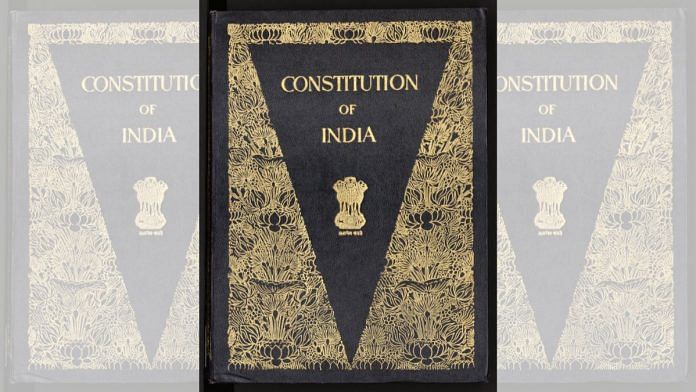Thank you dear subscribers, we are overwhelmed with your response.
Your Turn is a unique section from ThePrint featuring points of view from its subscribers. If you are a subscriber, have a point of view, please send it to us. If not, do subscribe here: https://theprint.in/subscribe/
On May 13, 2025, the President of India invoked Article 143(1) of the Constitution to refer fourteen questions to the Supreme Court. While Presidential References are not uncommon, fourteen have occurred before this one raise concern not for its form, but its intent. It comes in the wake of the Supreme Court’s landmark decision in State of Tamil Nadu v. Governor of Tamil Nadu [2025 INSC 481], which firmly reaffirmed constitutional governance. Yet, rather than respecting this verdict, the executive seems determined to revisit settled law through the backdoor of advisory jurisdiction.
Indeed, one might ask whether the fifteenth question should have been: “Are we still required to abide by the Constitution?”
The Nature and Limits of Article 143
Article 143(1) empowers the President to seek the advisory opinion of the Supreme Court on questions of public importance. But such an opinion is not binding, nor does it operate as a judicial pronouncement. In fact, the Court may even decline to answer. The provision, while powerful, must be used with restraint. It is meant to clarify the law, not obscure it.
The real concern arises when the reference seeks to reopen constitutional certainties and issues already answered through text, debates, and judicial precedent. Such usage risks turning Article 143 into a political tool rather than a constitutional one.
Attempt to Undermine a Landmark Judgment
The Supreme Court’s verdict in the Tamil Nadu case clarified that giving assent to Bills is not a discretionary power of the Governor, but a constitutional obligation. The new reference seems aimed at challenging this principle, creating the illusion of ambiguity where there is none. It is a constitutional sleight of hand, an attempt to question clarity under the guise of seeking clarity.
But the judiciary has spoken. Repeatedly. Unambiguously.
The Westminster Model: Reign, Not Rule
India follows the Cabinet system based on the Westminster model, where the President and Governors “reign but do not rule.” Real authority lies with the Council of Ministers, and constitutional heads are bound to act on their advice except in limited, clearly defined circumstances.
Articles 74, 75, 77, and 78 at the Union level, and Articles 163, 164, 166, and 167 at the State level, codify this. There is no room in these provisions for wide discretionary powers in legislative assent.
The Illusion of Discretion
The belief that Governors can act independently in matters like Bill assent is a constitutional myth. The Supreme Court in Samsher Singh v. State of Punjab (1974) affirmed that executive power must follow ministerial advice, except where the Constitution explicitly provides otherwise.
If Article 163(1) granted general discretion, Article 163(2) would not need to identify specific cases of it. Further, the framers deliberately omitted the phrase “in his discretion” from Article 200 unlike its predecessor, Section 75 of the Government of India Act, 1935. This omission was intentional, not accidental. It reflects the clear intent to limit gubernatorial discretion.
The Dangers of Constitutional Evasion
When settled constitutional interpretations are referred back to the Court as though they remain unresolved, it undermines not only judicial authority but the very essence of constitutionalism. Such tactics delay governance, erode public confidence, and politicize the judiciary’s advisory function.
The Constitution is not a questionnaire. It is a framework to be upheld and not manipulated for temporary political convenience.
Limited Government and Shared Power
No institution in a constitutional democracy enjoys absolute supremacy. The President, Governors, Parliament, Judiciary, and State Governments are all creatures of the Constitution. Each must operate within defined boundaries, checked by the others.
To suggest that Governors may withhold assent against ministerial advice without express constitutional sanction which is to flirt with colonial authoritarianism. Our constitutional promise lies in limited government, not in discretionary misuse by ceremonial heads.
When Silence Is Strength
The Supreme Court may respond to the President’s reference. But it would be entirely justified in declining. Article 143(1) does not compel an answer, especially when questions are speculative, political, or already resolved.
Judicial time is limited. So is public patience. When the law is already settled, revisiting it under the pretext of advice creates confusion, not clarity.
The Path Forward
The Tamil Nadu verdict rightly reaffirmed that the Governor’s role in legislative assent is ceremonial not discretionary. The Constitution requires this fidelity. If the Supreme Court responds, it should do no more than restate this settled law. But perhaps a firmer response would be to decline the reference altogether, making clear that the Constitution is not a battleground for speculative litigation.
As Paul Freund once noted, both law and art must strike a balance between form and substance, between the ideal and the real. The greatness of our Constitution lies not in evasive interpretation but in honest application. When law is infused with integrity, it becomes timeless.
These pieces are being published as they have been received – they have not been edited/fact-checked by ThePrint.


